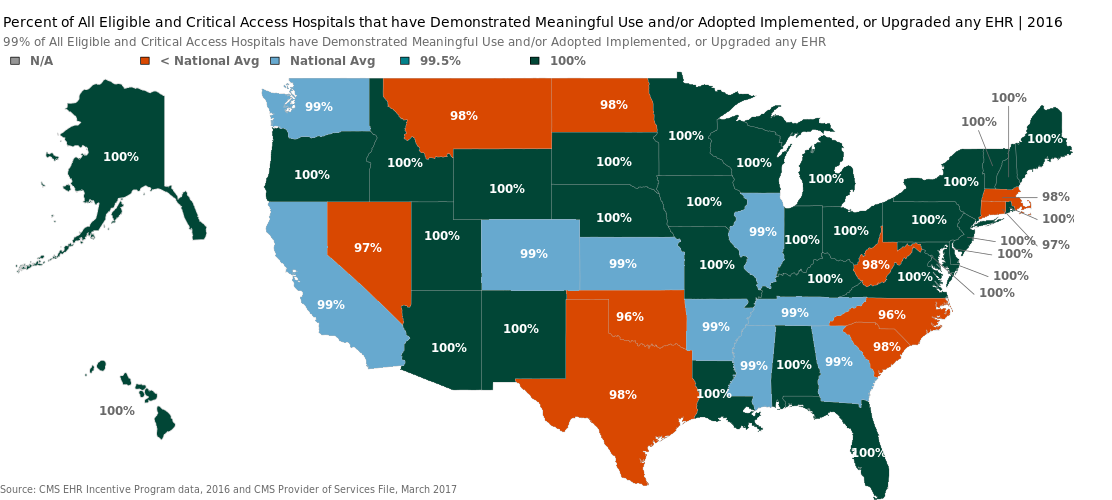
As of 2016, over 95 percent of all eligible and Critical Access hospitals have demonstrated meaningful use of certified health IT through participation in the Centers for Medicare & Medicaid Services (CMS) Electronic Health Record (EHR) Incentive…
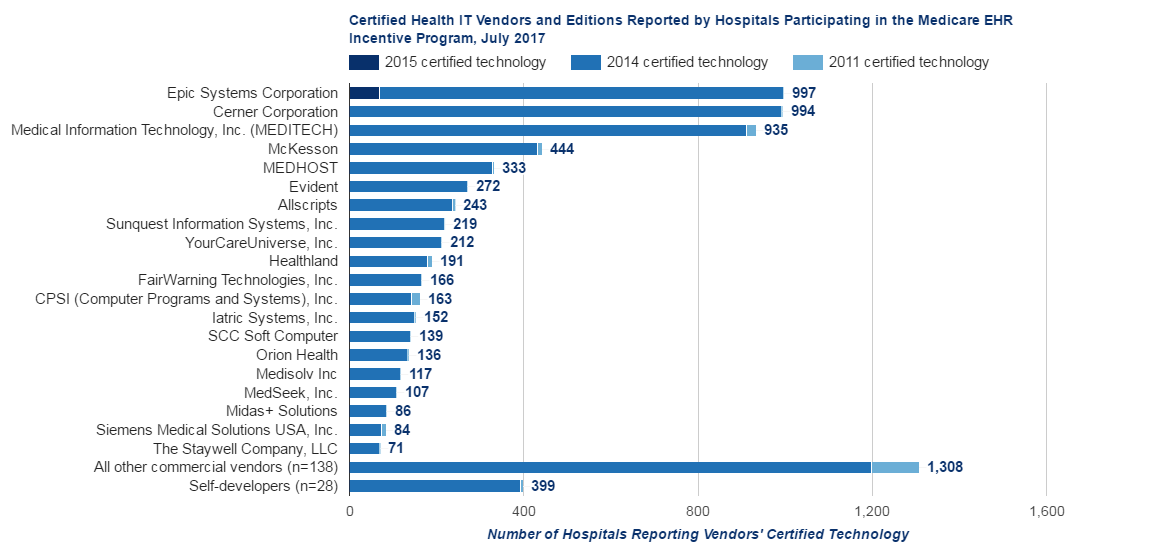
As of July 2017, 186 certified health IT developers supply certified health IT to the 4,520 non-federal acute care hospitals, including Critical Access hospitals, participating in the Medicare EHR Incentive Program. Of those 4,520 hospitals, 96% have…

As of July 2017, 684 health IT developers supply certified health IT to 354,395 ambulatory primary care physicians, medical and surgical specialists, podiatrists, optometrists, dentists, and chiropractors participating in the Medicare EHR Incentive…
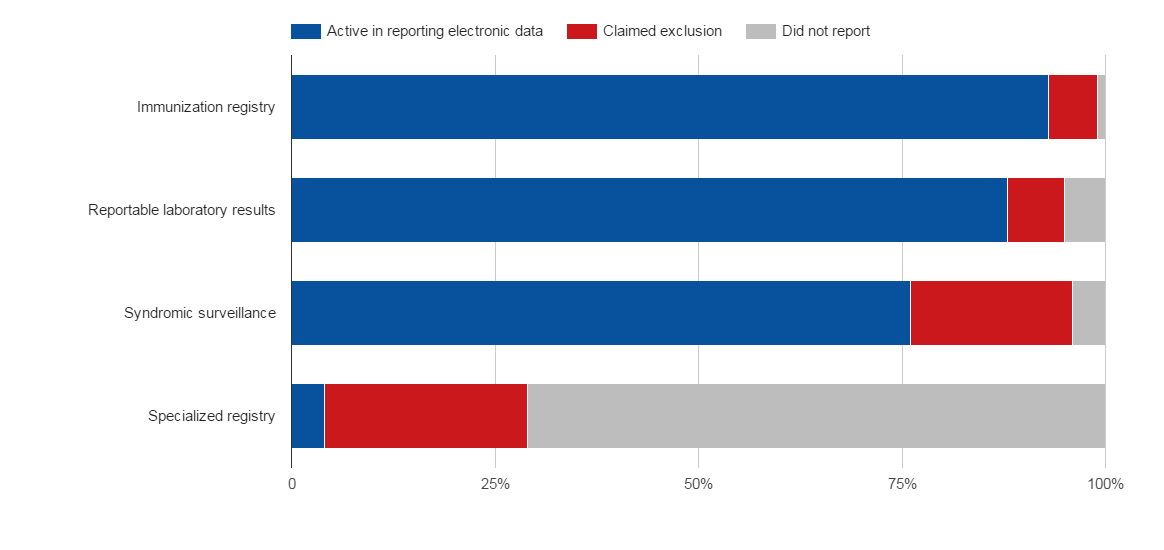
In 2015, 4,043 eligible and Critical Access hospitals (EH) reported to the Medicare EHR Incentive Program. 90 percent of hospitals attested to stage 2 of meaningful use. 93 percent of all hospitals reported active engagement with an immunization registry…
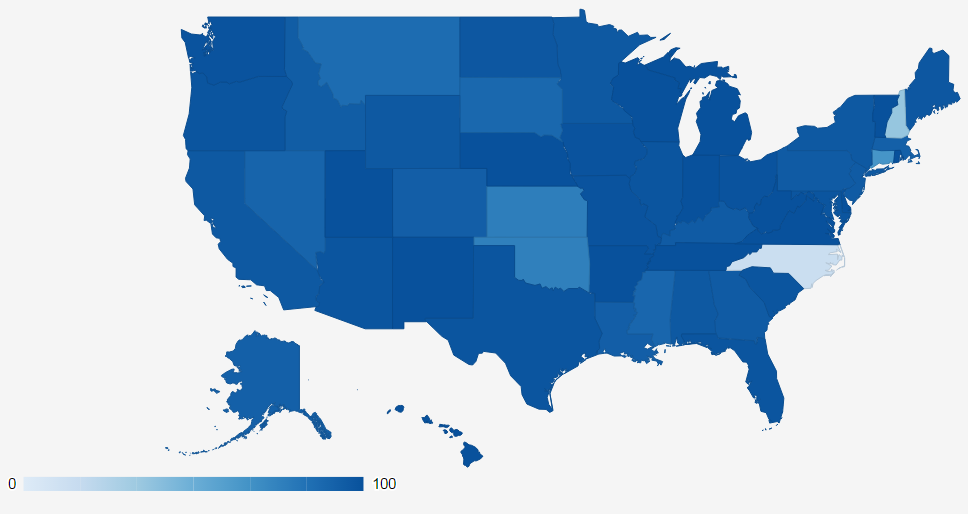
In 2015, eligible and Critical Access hospitals were required to report on active engagement with a public health agency to submit four possible types of electronic public health data: (1) immunizations; (2) reportable laboratory results; (3) specialized…
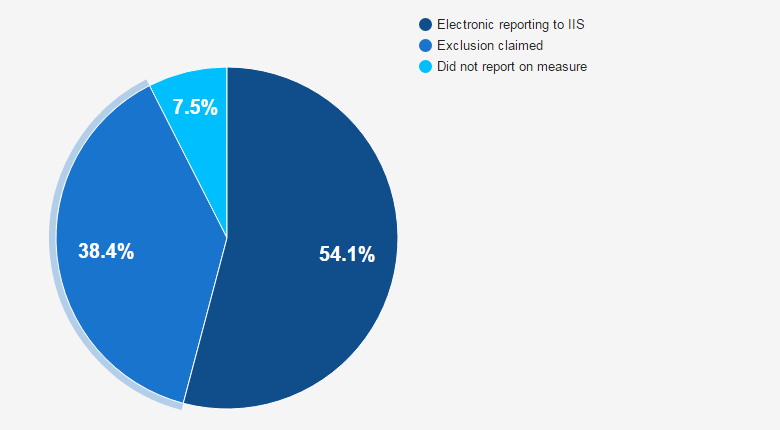
In 2015, 54 percent of eligible professionals (EP) participating in Stage 2 of the Medicare EHR Incentive Program and 44 percent of professionals participating in modified stage 2 electronically reported immunizations to local registries.
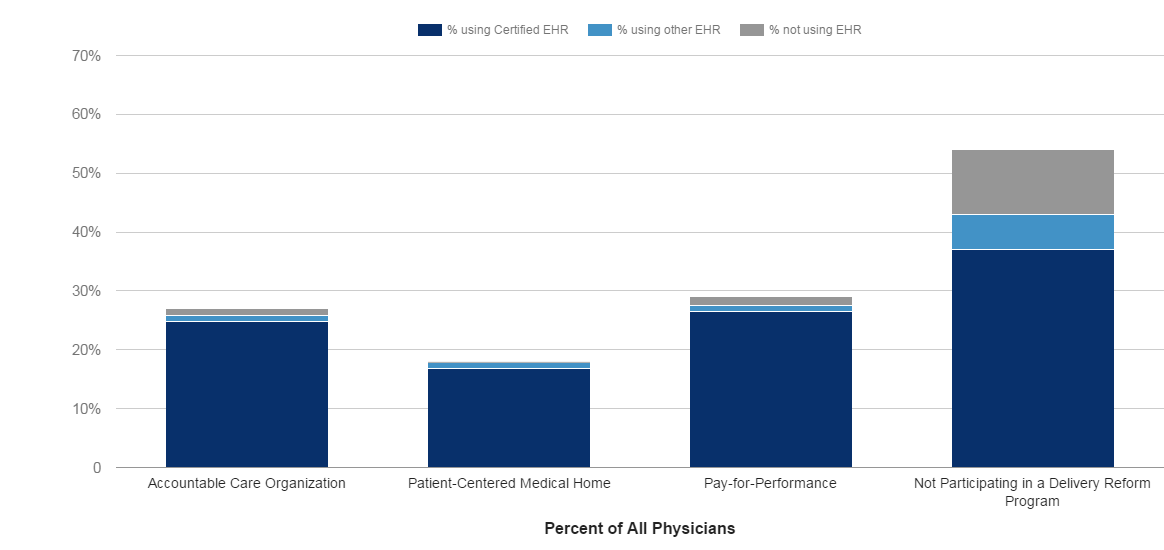
In 2015, <br/> reported use of a certified EHR, and 46% of all physicians reported participating in a delivery system reform program. Of those physicians participating in a delivery reform program in 2015, 90% reported using a certified EHR. Of all…

In 2015, 64% of physicians had an electronic health record (EHR) with the capability to exchange secure messages with patients, <br/>. Furthermore, 63% of physicians had the capability for their patients to electronically view their medical record…

Patient engagement EHR functionalities became more prevalent in U.S. hospitals from 2013 to 2015. The percentage of hospitals that provide patients the ability to view, download, and transmit their health records online accelerated from 2013 to 2015,…
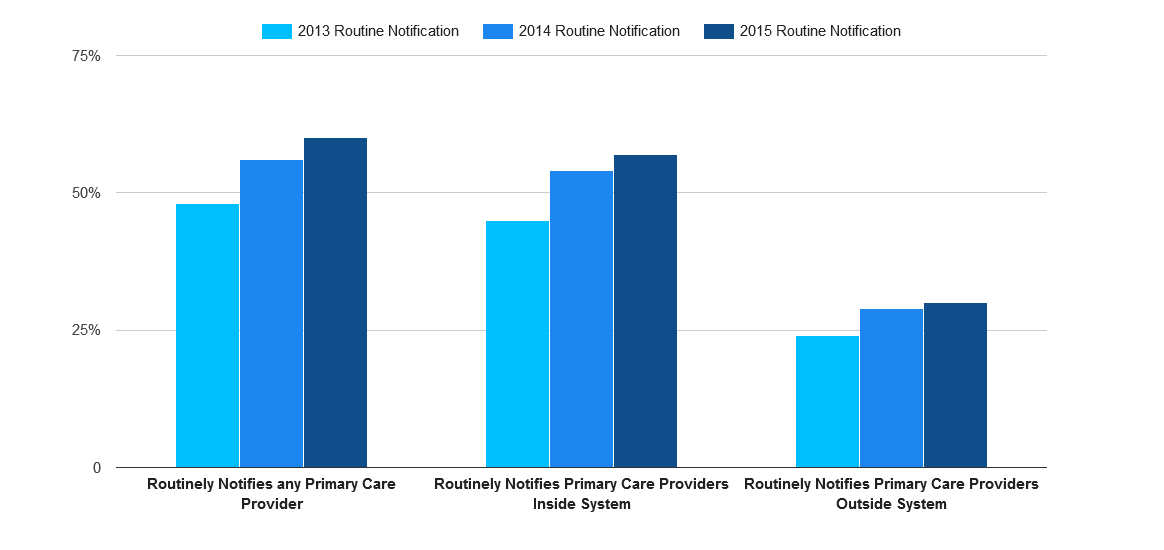
Three in five non-federal acute care hospitals routinely electronically notify a patient's primary care provider upon his entry to the hospital's emergency department - an over 50 percent increase since 2012. Fifty-seven percent of all…
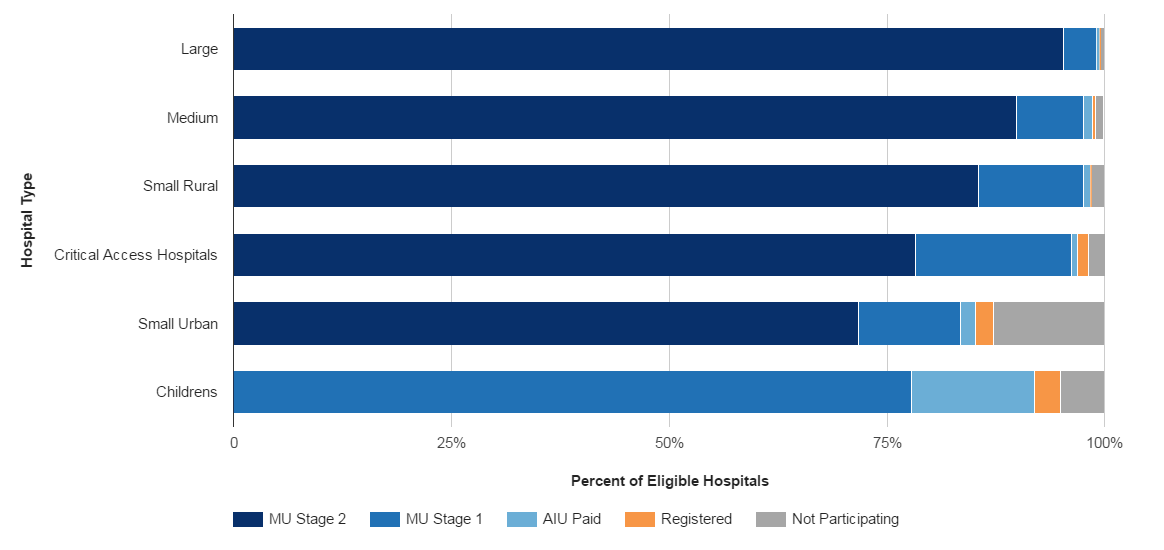
This figure was published in the March, 2013 ONC Data Brief, <br/>.
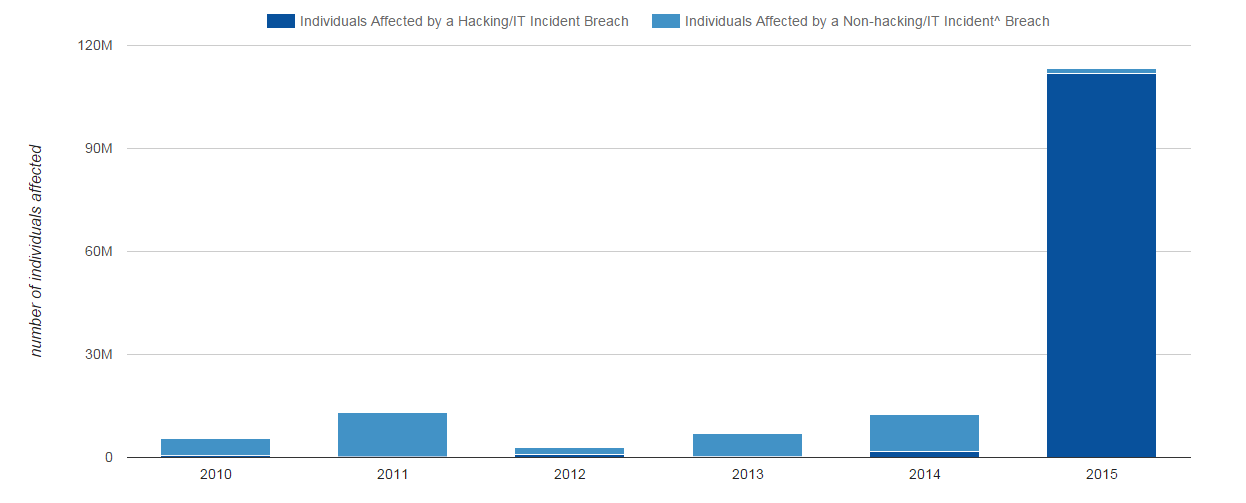
Based upon data collected by the HHS Office for Civil Rights, as of February 1, 2016, protected health information breaches affected over 113 million individuals in 2015. In 2015, hacking incidents comprised nearly 99% of all individuals affected by…
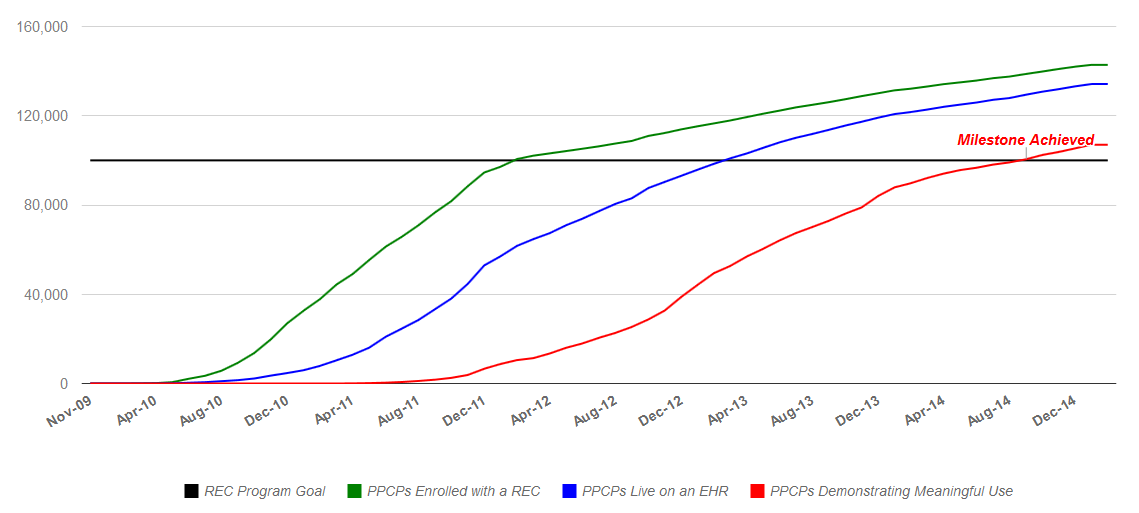
As of January 2016, the REC program has exceeded its target to enroll and assist 100,000 priority primary care providers (PPCPs) to demonstrate meaningful use (MU) of certified EHR technology (CEHRT). RECs support providers' adoption of CEHRT and…
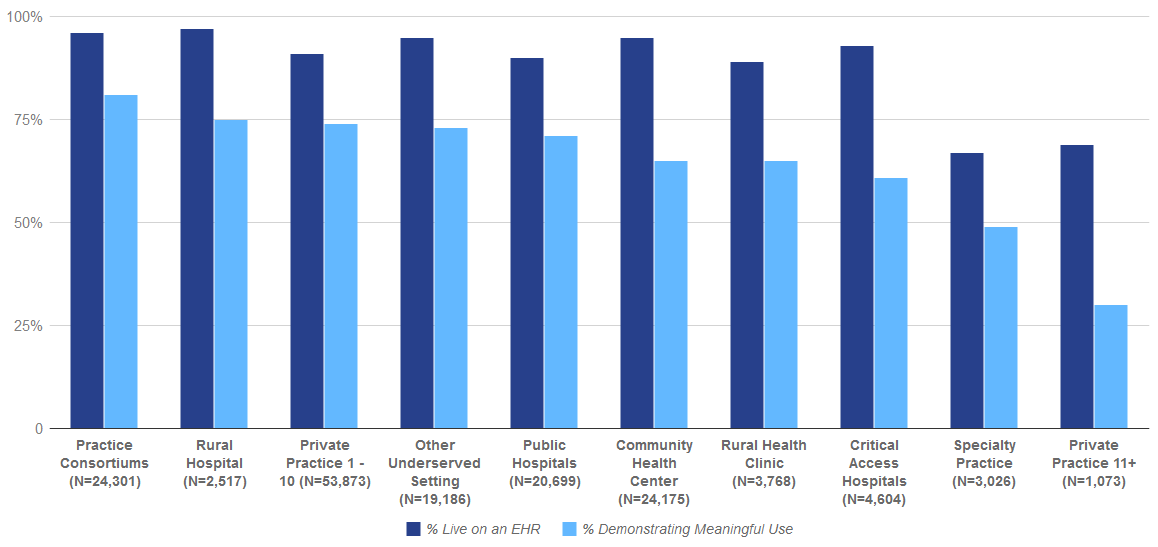
Over 90 percent of Regional Extension Center (REC) enrolled providers are live on an EHR, with three-quarters of enrolled providers demonstrating meaningful use (MU) of certified EHR technology (CEHRT).

Over 90 percent of all REC enrolled primary care providers are live on an EHR, with three-quarters demonstrating meaningful use (MU) of certified EHR technology (CEHRT). The majority of REC enrolled primary care providers are medical doctors or doctors…

As of January 2016, 87 percent of REC enrolled Critical Access/Rural Hospitals (CAH/RH) are demonstrating meaningful use (MU) of certified EHR technology (CEHRT).

Regional Extension Centers (RECs) are working with over 80 percent of Critical Access Hospitals (CAHs) nationwide as well as supporting practices participating in additional delivery system reform and payment models. RECs are supporting over 80 percent…
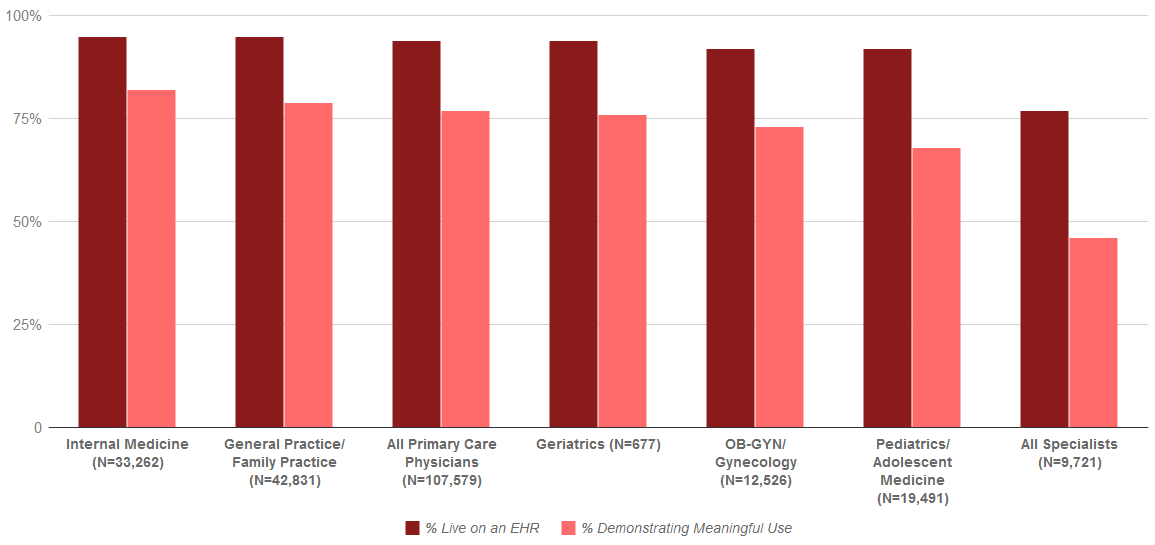
Over 90 percent of REC enrolled physicians are live on an EHR, and over 75 percent have demonstrated meaningful use (MU) of certified EHR technology (CEHRT). General Practice/Family Practice and Internal Medicine physicians comprise over 70 percent of…

